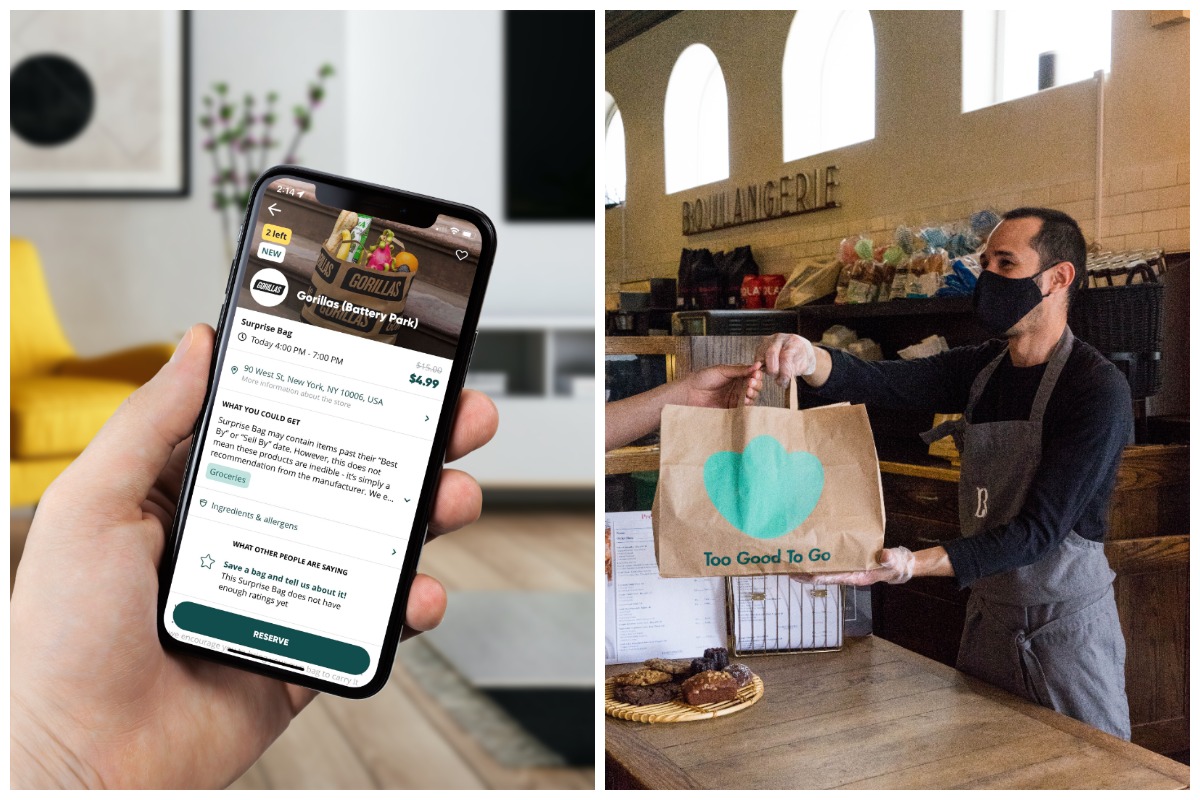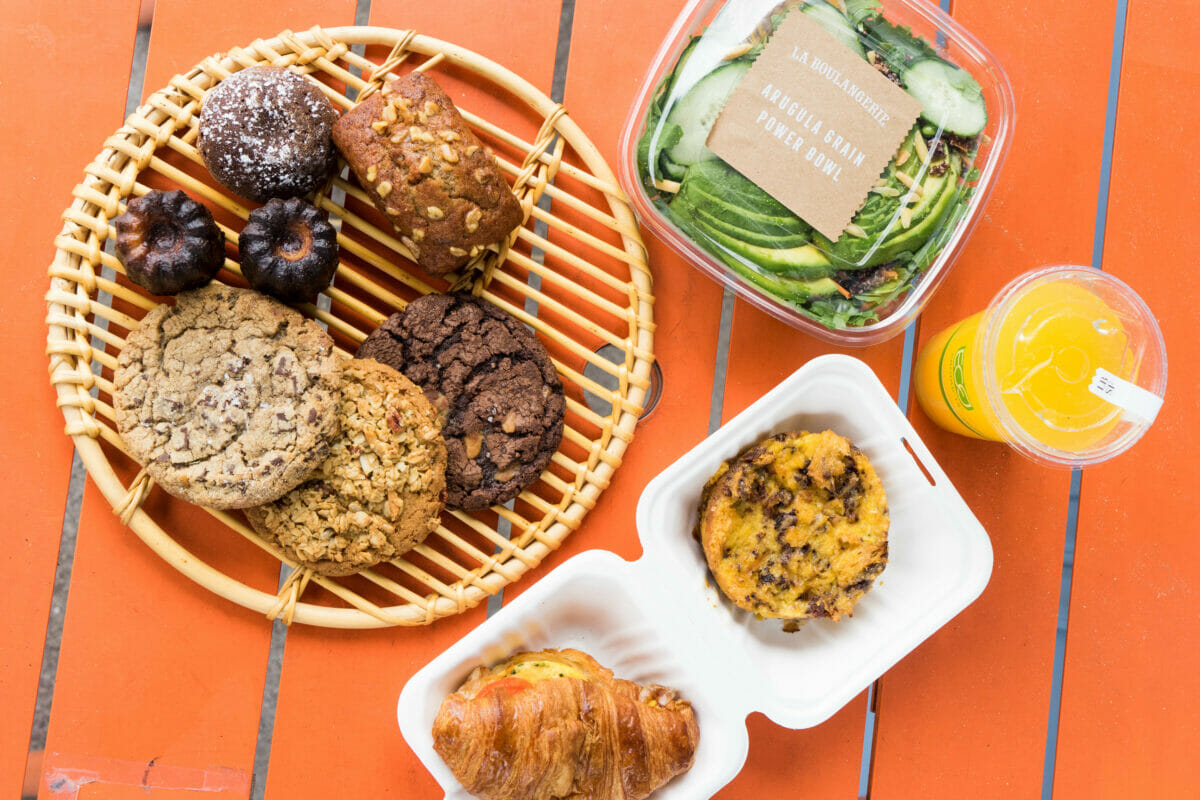Apps such as Too Good to Go are helping consumers rescue meals that would otherwise be tossed.

One Friday evening last fall, I rescued my first meal—bulgogi kimbap, garlic cucumber noodles and seaweed salad—from a local Korean market before they closed for the night. I paid $4.99 for it. The next afternoon, I rescued two croissants, one whole-grain muffin and a glazed doughnut from a nearby coffee shop. The baked goods haul cost me a total of $3.99, what I would have paid for a single pastry had I come in earlier with the morning rush.
A few days later, I walked into a vegan pizzeria at 9 p.m. and rescued a box packed with assorted slices, enough food to feed me and my partner lunch for a couple days, all for $4.99. Later that week, I strolled down to our neighborhood’s weekly farmers’ market, where I rescued a bag filled with fresh gai lan (Chinese broccoli), scallions, baby turnips, shishito peppers, watermelon radishes and cilantro—produce that might have spoiled and been tossed had I not swiped it up. Again, my farmers’ market haul cost me only $4.99.
I rescued all the food through an app called Too Good to Go, which I finally downloaded after months of being bombarded with targeted ads for it. At first, I thought it was too good to be true. Saving still-edible food from being tossed in the dumpster, and at a significantly cheaper cost to me? Why wasn’t this practice already widespread?

A sample Surprise Bag from La Boulangerie. Photo courtesy of Too Good to Go.
The Copenhagen-based app Too Good to Go, which launched in the US in New York City in October 2020, connects users with nearby restaurants, bakeries, supermarkets and other vendors with extra food that would otherwise be thrown away, allowing them to sell it at a discounted price instead. Now in 12 American cities, including Baltimore, Chicago, Philadelphia, Austin, San Francisco and Seattle, with more than 8,000 partnering vendors, Too Good to Go has helped save more than 1.4 million meals in the US in less than 18 months.
“It’s a win for those businesses that, first of all, no longer have to throw food away,” says Claire Oliverson, a spokesperson for Too Good to Go, a B-Corp company. “They make it so lovingly every day and to have to throw it away is really sad. But they also get increased revenue that hopefully at least covers the cost of the ingredients.”
On the user end, you don’t get to see exactly what you’re going to be picking up, but for me, that’s part of the appeal. The “Surprise Bags,” made up of whatever excess food the business has, present an opportunity to try something—or someplace—new. If you’re someone who’s less adventurous or has strict diet restrictions, this app may not be for you. However, I have found that some places, such as pizzerias and bakeries, will let you pick from their surplus selection.
[RELATED: These TikTokers Are Turning Trash Into Food Treasures]
There’s a lot of numbers that get thrown around when discussing food waste, but when presented together, it’s almost too much to digest: In the US, food waste is estimated at between 30-40 percent of the food supply. That’s at least 133 billion pounds and $161 billion worth of food. As much as 10 percent of all greenhouse gas emissions come from food that ends up at landfills. If our global food waste could be represented as its own country, it would be the third largest emitter of greenhouse gases after the US and China. That’s a lot of wasted food, food that was grown by farmers and prepared by people who care deeply about feeding others.
While the shared mission of apps such as Too Good to Go and Flashfood (which targets food waste in grocery stores) to rescue food from being tossed in the trash is an honorable one, they’re not going to solve the global food waste problem. Neither can we, on an individual level. But small changes can snowball into larger shifts in perspective, which might someday lead to much-needed policy overhaul.
“When you have an issue that’s so massive, so often it feels kind of immobilizing,” says Oliverson. “We really wanted to come up with a solution that’s accessible, that’s simple and makes it really easy to get involved. It’s something everyone can do in their local communities.”
It’s also something that I, for one, plan to continue.
I love this story! Food waste is a huge source of greenhouse gases. Plus I don’t like waste in general. I’m so glad software developers have come together with the food rescue movement to make this possible.
I live in Eureka, MO where Too good to Go does not recognize or is not connected with local restaurants. What can I do to promote this ap with local restaurants? Thank you.